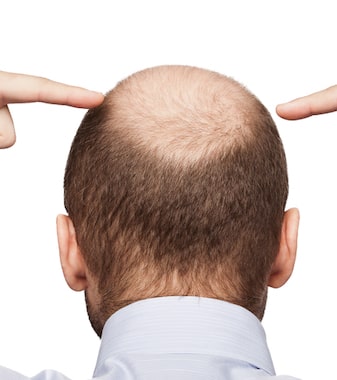Hair Loss Treatments – Discover Your Options
Hair loss, to a certain extent, is a natural occurrence for every person. It is quite common to naturally lose up to 100 hairs per day but, if your hair loss is more than that amount each day, you might be experiencing some form of hair loss. There are several causes for hair loss and the most common one is androgenic alopecia which is also known as male-pattern baldness. Take a look below to learn more about common causes for hair loss as well as a look at some of the most popular and successful hair loss treatments currently available for patients of all ages.

Hair Loss Causes
Besides male-pattern baldness, there are other common causes for hair loss and they include:
- Telogen Effluvium – Sudden stress can lead to hair loss as well as an amount of thinning on the scalp.
- Alopecia Areata – This is an autoimmune disease that can result in the appearance of patchy baldness on the scalp (the patches are usually round in shape and the size of a coin).
- Trichotillomania – The loss of hair on the scalp which is the result of a psychological condition that causes people to involuntarily pull their hair in certain areas of the scalp.
- Traction Alopecia – Hair loss that is the result of the continuous pulling of hair in a certain area of the scalp (thanks to hairstyles such as long braids or ponytails).
Hair Loss Treatment
The type of hair loss treatment for a patient depends on the amount of hair loss, the reason for the hair loss and the results the patient wants to experience. Popular hair loss treatment options include:
- Finasteride (Propecia) – This is a prescription oral medication that is available for purchase under the brand name, Propecia. Finasteride is FDA-approved for the treatment of male pattern baldness as it slows down the amount of hair loss and also stimulates the growth of new hair on the scalp. The medication works by lowering the levels of DHT in the body. Dihydrotestosterone (DHT) is an androgen that can cause hair loss by shrinking the hair follicles of a person and also causing the hair growth cycle to be shorter than normal. This results in the hair falling out faster because it is thinner and more brittle. It can take around four months to start seeing any results from finasteride. Patients should be aware of the fact that finasteride is not a permanent hair loss solution and the results that have been gained will go away if you stop taking it on a regular basis.
- Minoxidil (Rogaine) – Unlike finasteride, minoxidil is a topical treatment option that is sold over the counter so you do not need a prescription to obtain the product. Minoxidil is available as a foam or as a liquid spray and is sold under the popular brand name, Rogaine. Minoxidil is a vasodilator which means it dilates the blood vessels under the skin in order to increase the flow of blood. While the exact mechanism of action for minoxidil, AKA the active ingredient, is not completely clear, there is a belief that it works by partially enlarging the hair follicles and elongating the growth phase of the hair on the scalp. If there are more follicles in the growth phase of the hair cycle, you will then see more hair coverage on your scalp. You need to be aware that your hair will start to shed early on when you start to use minoxidil. Do not worry as this is perfectly normal and it simply means the hair on the scalp is transitioning from the resting phase to the growth stage of the hair growth process. Just like finasteride, minoxidil will only work for as long as the product is used on a regular basis. If you stop using it on a regular or consistent basis, the hair loss on the scalp will resume.
- Hair Transplant – The most effective, natural and long-lasting method to treat hair loss is undergoing a hair transplant. The donor hair for hair transplant surgery is usually taken from the donor section of the scalp (the back and sides of the scalp) and moved to the balding/thinning areas of the scalp. The most popular hair transplant method is Follicular Unit Extraction (FUE) where the hair is removed from the donor area on an individual basis so there is no chance of a linear scar happening (as in older hair transplant methods). The hair that is transplanted is resistant to balding which means you do not have to worry about losing it once it is transplanted to the scalp. The other areas of the scalp, not treated by the hair transplant, can still lose hair so there is a possibility that you might want to have an additional procedure in the future.
Hair Loss Consultation Appointment
The first step in the hair loss treatment process is scheduling a consultation appointment with a board-certified doctor who is experienced in treating hair loss. The doctor will examine your scalp to determine the amount of hair loss as well as the reason for the condition.
Once the medical reason for the hair loss has been identified, the doctor can discuss your options to determine the next step in providing you with the hairline you desire.
If you are suffering from hair loss and would like to address the issue, we invite you to contact our office to schedule a Los Angeles hair transplant consultation appointment or a San Francisco hair transplant or a Beverly Hills hair restoration consultation appointment.